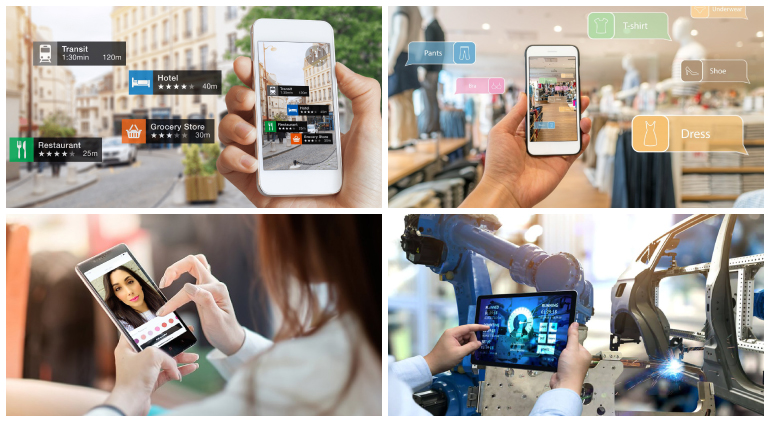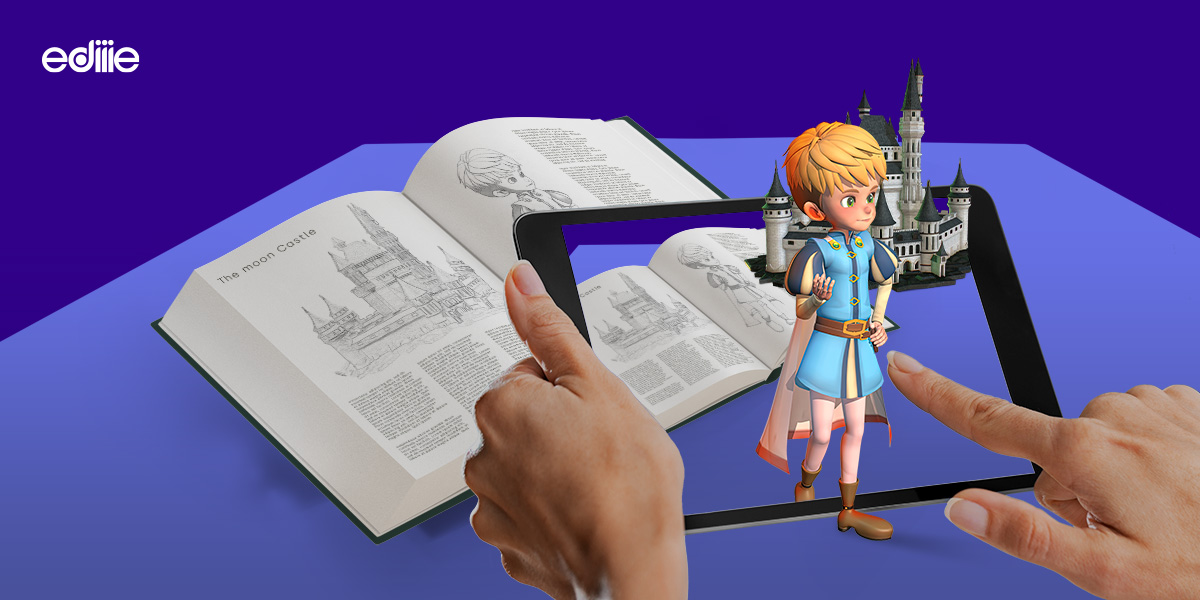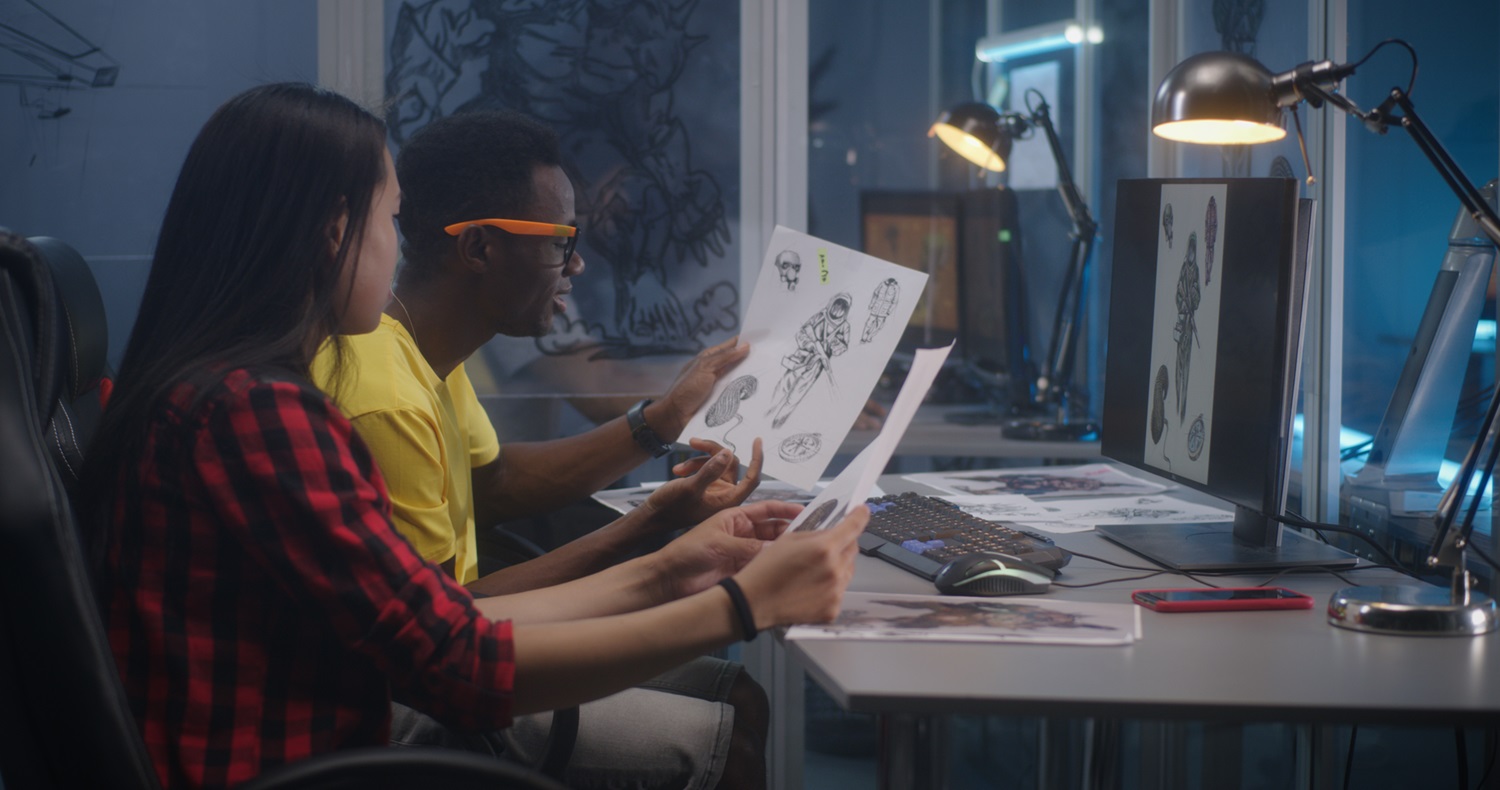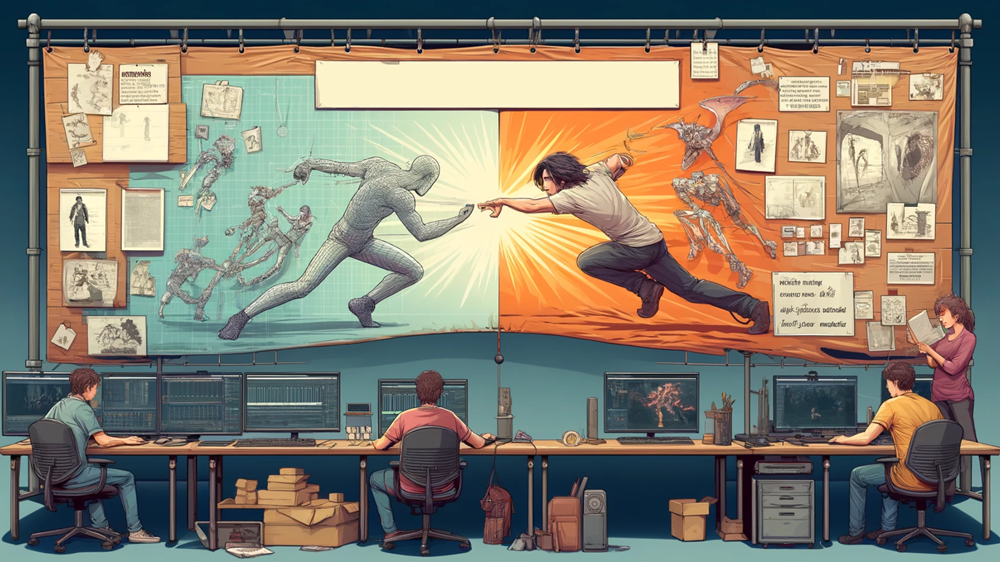Storytelling with AR: How Augmented Reality is Revolutionizing Storytelling
The concept of Augmented Reality, in reality, dates back to the 1960s. However, it was only in the 90s that it was christened by Boeing researcher Tom Caudell. He used the term, back then, to describe what was essentially a head-mounted display system for line workers assembling aircraft parts.
Then, in the rest of the 90s to all the way to the early 2000s, the development and use of AR were seen mostly in industrial and academic applications. But all this changed when the technology caught up in the 2010s, to what we now essentially experience in storytelling with AR.
If we were to pinpoint exactly when AR started becoming mainstream, it would have to be when smartphones and tablets started appearing with powerful cameras, sensors, and processors. This allowed augmented reality for businesses and the masses, with new types of apps and games joining the fray.
Beyond the Page and Screen: AR for Immersive Storytelling
Pokémon GO marked a turning point in recent years when a seemingly simple AR-based game became a massive phenomenon. That was 2016, and since then, the tech has continued to evolve.
Developers have found a use for this in various fields, and one such important application is storytelling with AR. Here are some ways in which augmented reality helps in the art of storytelling for creators:
Engaging Story Experiences:
When in storytelling with AR, users tend to become a part of the story owing to the virtual objects and characters in them. This is a departure from traditional storytelling as you are more than just a passive observer in the story.
Depending on the creator and developers, there can be moments when you get to interact or set the course for the narrative. And this adds a sort of new dimension to storytelling making you feel more connected to the virtual in the real world.
Storytelling in Real Space:
This technology serves as the basis with which you can see stories come alive around you in the real world. You don’t have to wear any virtual goggles and still, be treated to characters, clues, and virtual scenes in the space around you.
Storytelling in AR can utilize GPS-linked triggers that synchronize digital elements on actual locations. And this will allow for moments such as exploring historical sites with virtual characters or watching events unfold on a canvas.
Immersive Character Interactions:
Similar to storytelling in video games, creators can utilize the powers of AR to bring characters from storybooks and their pages to the real world. This means that you will be able to see them and hear them as if they were standing right in front of you.
And not just that, but also interact with them! AR, in all senses of the word, will make storytelling truly immersive when it's implemented in this way and make for meaningful connections with the characters.
Enhanced Visual Storytelling:
Not just through characters, but storytelling in AR will also encompass moments where we will be treated to digital elements in the world we see. This means watching visual effects and creative elements added by the developer into an application that unfolds seamlessly with the world that the users are watching.
Pretty soon, as the tech gets stronger, this would translate into expansive digital effects that will help us perceive our environment in totally new ways when using an app.
AR Books and Magazines:
As an extension to the usual steps through storytelling in AR, the technology can also be harnessed in making reading materials more interesting. Whether it’s a storybook, stationary material or even posters and tickets, they can all enable new tangents for AR experiences.
Just imagine scanning an augmented reality QR code on your stationary books and launching into a game with your friends! This will add new layers to print media and also unlock new levels of engagement between creators and users.
AR-powered Brand Experiences:
 The use of augmented reality will ensure that brands will be able to create experiences that customers won’t forget. That’s because the marketing content will become more than just the message – it will include all sorts of digital or virtual effects and elements that will utilize the powers of storytelling in AR.
The use of augmented reality will ensure that brands will be able to create experiences that customers won’t forget. That’s because the marketing content will become more than just the message – it will include all sorts of digital or virtual effects and elements that will utilize the powers of storytelling in AR.
Moving forward, more and more brands will experiment with AR development and create campaigns that are geared towards certain audiences they find it’ll be useful for.
In conclusion, these are some of the ways in which augmented reality transforms storytelling by mixing the actual world with the digital world. AR storytelling opens up fresh opportunities for creators to captivate, amuse, and educate their audiences. That too, in ways that couldn't be imagined using just regular methods.
That’s because with AR storytellers basically have a canvas to create immersive stories and experiences. Given from what we’ve outlined above, it lets stories come alive making them interactive and personal. It's like a whole new chapter in the art of captivating audiences.
AR Storytelling: A Game-Changer in Brand Engagements
The AR VR revolution has been a boon to enterprises looking to elevate their brands in a sea of competitors and similar businesses. Especially AR as it is far more accessible to consumers owing to QR codes, a bit of magic, and modern smartphones’ computing powers.
Expanding on their benefits from storytelling in AR, here are some ways augmented reality can help companies to market their brands just a little bit better:
Product Demonstrations:
 Brands can use augmented reality to promote their products in a new and engaging way. Using this, customers can do more than simply browse at photographs with AR; they can actually try out things before purchasing.
Brands can use augmented reality to promote their products in a new and engaging way. Using this, customers can do more than simply browse at photographs with AR; they can actually try out things before purchasing.
Imagine being able to use your phone to view how a new sofa would fit in your living room or how a pair of shoes would appear on your feet. As such, customers will make more educated decisions when they understand how the product fits into their life using this tech.
A New Way to Try On:
Storytelling in AR has become a useful tool in the realm of beauty and fashion. Customers can digitally try on cosmetics, haircuts, and clothing without really going through with the entire process in the first case.
Like they can consider experimenting with different lipstick colors or haircuts – all using the cameras on their phones. This customized experience allows them to see how items will appear on them before making their minds up about the product or service.
Spatial Marketing:
Imagine embarking on a virtual treasure hunt around your favorite business or visiting a location without really being there. That’s one of the many things possible once brands start to use AR to build interactive games like scavenger hunts.
They’ll work by using your phone to guide you around different areas. In essence, that’ll transform ordinary areas into thrilling playgrounds through storytelling in AR. It will be a useful way to captivate people’s attention and make their experiences more memorable, whether they are physically present or not.
Games and Contests:
 By utilizing the abilities of storytelling in AR, brands will be able to make new types of activities and contests. This will make interacting with their products more enjoyable as people could be playing games regarding a brand's products.
By utilizing the abilities of storytelling in AR, brands will be able to make new types of activities and contests. This will make interacting with their products more enjoyable as people could be playing games regarding a brand's products.
Based on what the company chooses, this could span from solving riddles to completing tasks or simply creative gamified moments: Turning their campaign’s attention to being not just about promotions but also memorable experiences.
Collecting Data:
For brands, when individuals will interact with their AR experiences, marketers will get learn a lot about their behavior and preferences. This data will be like a treasure trove of insights that will help firms in improve their marketing.
Businesses will become empowered in making better judgments about how to communicate with their consumers. And all this, by understanding how individuals use AR and what they love the most.
Harnessing AR for Immersive Stories and Campaigns
Storytelling in AR, as we’ve learned, is really the way to go for many in setting immersive narratives and putting a creative touch on the tales they tell. It is more than beneficial in areas like brand marketing, and from the details we know, it’s a solid addition to many other fields such as gaming, education, advertisement, movies, traditional media, etc.
- Grand View Research predicts that the worldwide revenue for mobile AR alone will reach $200 billion by 2025. With the market size for AR advertising growing at a CAGR of around 47% up until 2027.
There are untapped possibilities enabled by AR waiting just around the corner. And our teams at EDIIIE are poised to help you reach them: so you can harness augmented reality for your campaign, business, or product, in exactly the way you have envisioned.






